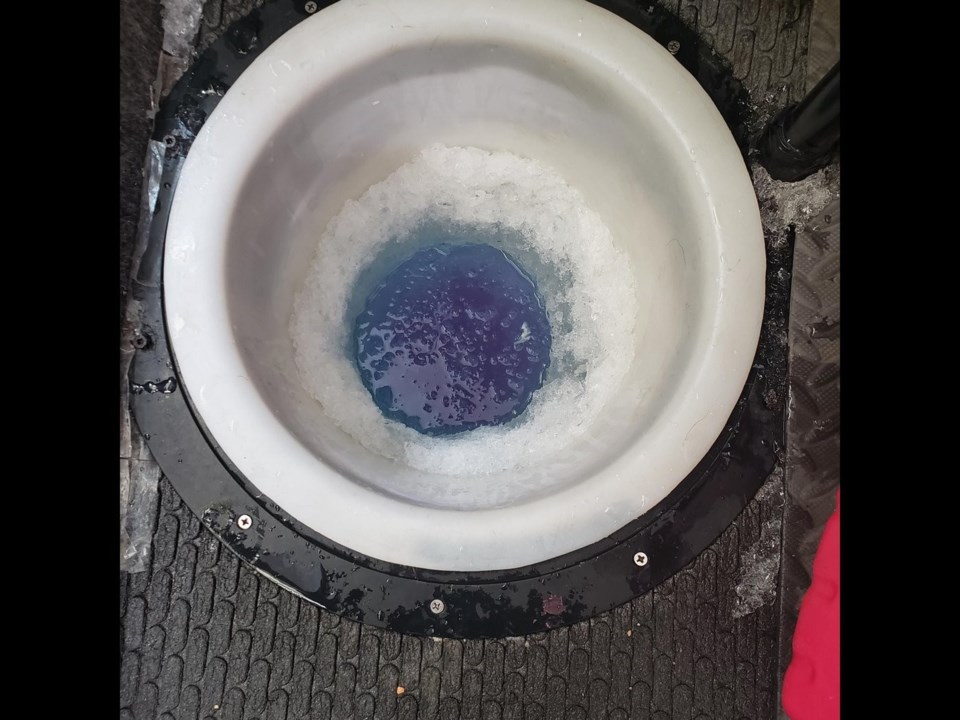The Water Security Agency (WSA) believes it has an answer about the odd, purple-blue water found by ice fishers in and on Pasqua Lake two weeks ago.
The provincial water manager said in a media release test results show the discoloration was “caused by a late cyanobacteria (algae) bloom last fall.”
Like what University of Regina (U of R) water scientist Dr. Peter Leavitt told the Leader-Post last week, researchers “believe the bloom froze in the ice in mid-October 2020 and underwent freeze and thawing cycles over the past few weeks,” the WSA said. “Cyanobacteria (algae) exposed to these conditions release a bright blue pigment called phycocyanin, as well as microcystin, a related toxin.”
Leavitt, who heads the U of R’s Institute of Environmental Change and Society, said the colour pigment is equivalent to “an organic dye,” not harmful to humans; it results from the freeze-thaw cycle busting up algae cells.
He and the WSA agreed the amount of microcystin found in the purple-blue samples is not particularly toxic — 0.1 parts per billion, the WSA said in its release.
The acceptable risk level, the WSA said, for “recreational activity is 20 parts per billion,” and for drinking water is “1.5 parts per billion.”
Leavitt cautioned high levels of microscystin could be an issue: It’s a cancer-causing toxin that will attack an organism’s liver. Humans tend to pass it through their systems quickly, by ingesting algae-covered water. He suggested avoiding chronic exposure to it.
“(Microcysitn) is found in many if not all of the lakes of southern Saskatchewan, but at fairly modest levels.
“What we’re seeing is these blooms are becoming more toxic,” because of global warming and increased nutrient run-off (phosphorus and nitrogen) from farmers’ fields, he said.
The WSA is to continue studying Pasqua Lake into the spring to check how or if algae blooms there are choking off its oxygen.




